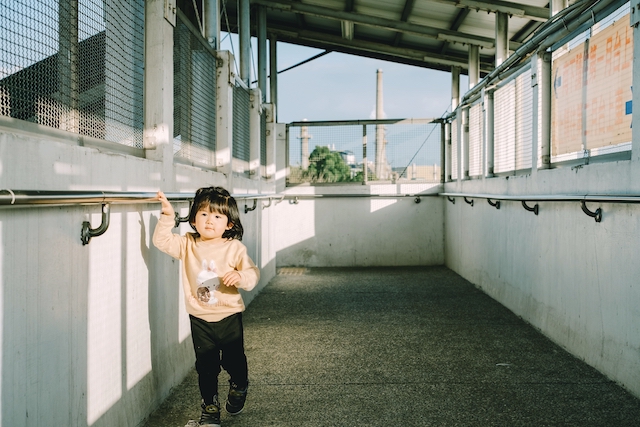The TV show 'Old Enough' is about kids running errands... and Japan's economics choices.
It’s maybe not all that surprising that a Japanese show about toddlers running errands outside their home all by themselves became a Netflix hit internationally. Kids are cute, and it’s funny to watch a very small person navigate a world built for adults.
However, another reason some viewers can’t tear their eyes away is the shock factor. To many people, it simply doesn’t seem safe to let young children wander around roads and public areas unsupervised. This shock is particularly acute because while the mini stars of the show are obviously being surreptitiously followed around by a camera crew, the programme is based on a genuine Japanese phenomenon of encouraging small kids to operate with a much larger degree of independence than in many other rich countries, including Britain and the USA.
By the time they are ten or eleven, the average Japanese kid will be parent-free for 85 percent of their weekday trips. In comparison, a survey of British parents found that only a third would allow a 12-year old to walk to school alone, and less than three in ten would send a child that age to the shops. Some people may shrug off this difference as just an example of the variation in human culture across the globe; different places tend to do things differently. While true, that explanation ignores some of the deliberate economic choices that Japan has made which have created the conditions in which a cultural norm of having independent children could thrive. One key set of said choices is their approach to urban planning.
When societies build, they tend to have a somewhat holistic plan for how a particular area is going to function. In the UK and the USA, the preferred approach is to section out areas for specific functions (called “zoning”). A city or town will have a bit that is mostly for working in (the business districts) or mostly for shopping in (high streets or city centres) or mostly for living in (the residential neighbourhoods). In contrast, Japan tends to build areas that mix up all these functions, so that things like houses and supermarkets and schools are often close together.
Zoning has benefits. For example, having all the shops in one place is convenient for customers and for shop owners, who can entice in customers who only left the house to buy something sold by a neighbouring store. Lots of people also like the idea of keeping homes away from places that attract a lot of footfall and everything that comes with that, from noise to littering to curious people peering through your curtains. But Japan’s system makes it much more likely that a child will be able to get to places without having to either travel far or needing to navigate a complicated public transport route.
Another important difference is Japan’s choice to put cars (and their drivers) way down the priority list of who public spaces are designed for. Roads are much narrower (which makes people drive slower), cars cannot be parked on the street (so cannot block drivers’ views of people walking along) and the onus is much more strongly on drivers to be cautious of pedestrians rather than the other way around. This means even somewhat inattentive children can wander the streets much more safely than in other countries. (The policies may also disincentive driving, which is being increasingly seen as a good goal for societies to aim at, considering the environmental impact of cars.)
If other countries aped these sorts of planning decisions, childhood independence could well rise in tandem. And there could be lots of benefits to that. Giving kids more independence helps them develop the sort of confidence and other valuable life skillsthat can set them up for better financial and wellbeing outcomes later in life. Not having to accompany their kids everywhere also frees up their parents time. The impacts of that could range from the convenient - say being able to wait in for a service person and have your kid getting dinner ingredients before the shops shut - to the significant. For example, if more parents were freed from the school run, they would be less tied to work that allows for that level of flexibility. Often, this flexibility comes with downsides, such as being a barrier to promotion or full-time work. And because it is women who still do the majority of the childcare, mothers are particularly disadvantaged by this system.
Read our explainer on: social norms

